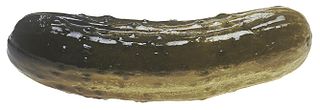Not even a global pandemic can halt our annual celebrations. Festivus, move over. OPIGmas is here.
We were all lucky enough to have electricity; computers with webcams and microphones (Dan’s dalek incantations notwithstanding); and network connections; and somehow (for some of us) the time, to gather together around our twenty-first century electronic hearths and celebrate: Zoom, Gather Town, Among Us, Skribbl.io, and Codenames.
The much-awaited Secret Santa often reveals how naughty or nice the sender is, and sometimes surprising details about the relationship of the sender and recipient (I’m looking in the general direction of Dominik and Brennan). The rules are simple: spend up to £10 GBP, and don’t buy anything the boss wouldn’t buy for someone… But despite the hypothesis that the longer someone had been in OPIG, the more ‘pointed’ the gift would be, exceptions could still be found.
Armed with her new Easy Learning “Times Tables Bumper Book”, the boss was anointed “CEO of ******* Everything”, with her new desk name plate. Without coordinating, the boss’ PA independently received a desk name plate as “Fixer of Everything”. Perfect, on both counts.
Continue reading →









